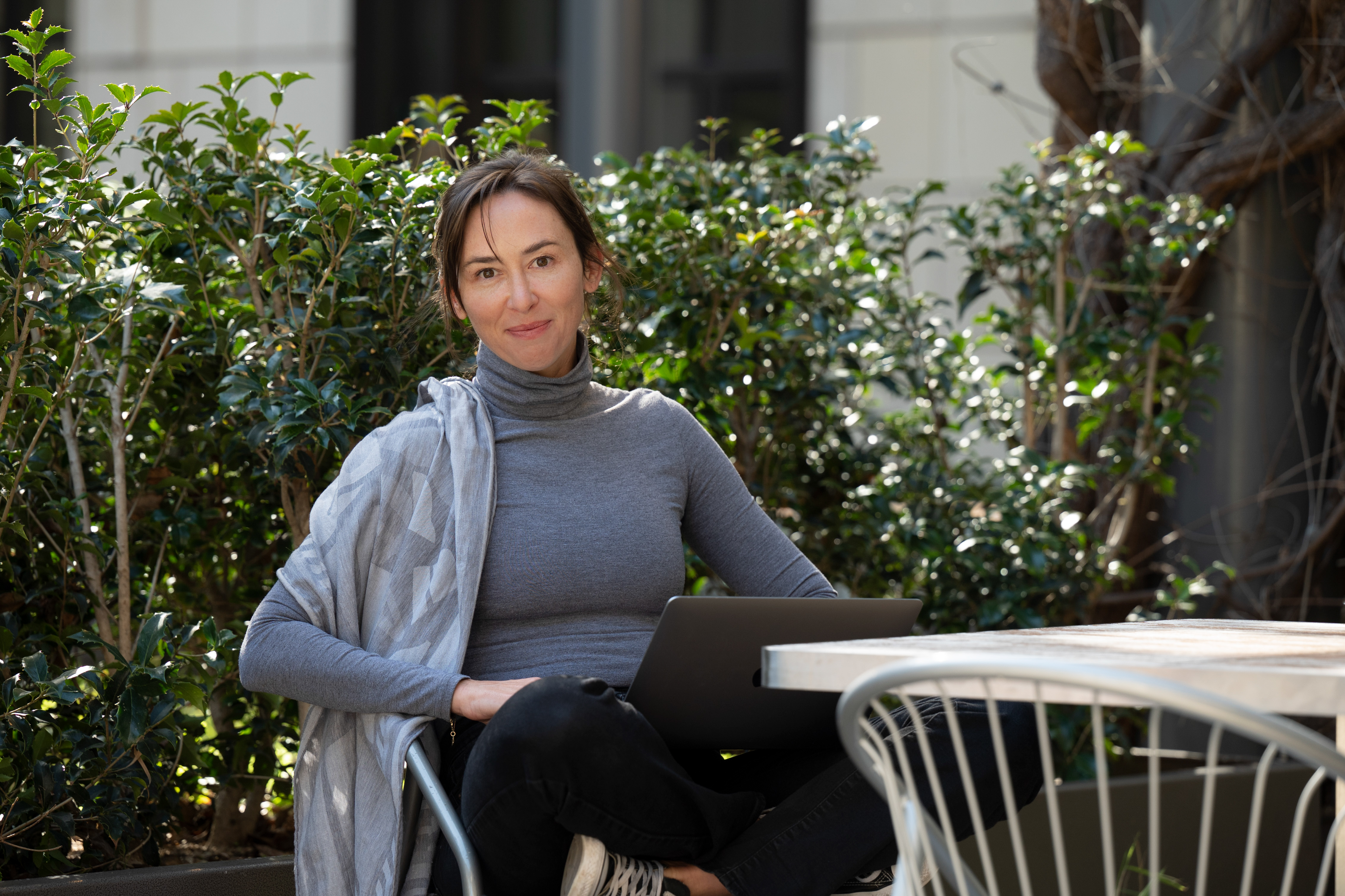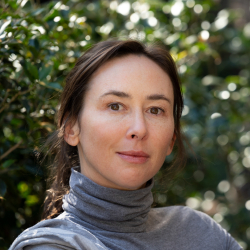
Bethanie Maples
What drew you to study education?
I started a nonprofit right out of high school and taught inner-city youths. It was a great experience, and ever after I wanted to find a way to use my technical experience in education.
What were you doing prior to applying to the GSE?
I was working at X (formerly Google X) leading an early moonshot team. I was (and am) also working with the OECD [Organisation for Economic Cooperation and Development] on their education technology advisory group, and on the PISA [Programme for International Student Assessment] science exam strategy.
Is there anyone who inspired you to pursue advanced study in education?
Roy Pea has inspired me since I met him in 2017. Certainly my teacher from Steiner School in Austin, Texas, William Toole. Mr. Toole was a scientist, a poet, and an academic, and I owe much of my interest in learning to his insights and interventions in my learning journey.
What was the focus of your master’s or qualifying project?
I created PeopleMap AI, a platform to analyze skills from natural language, and help job seekers and employers match upskilling, reskilling, and hiring potential.
What research are you pursuing at Stanford?
I'm focused on the emergence of strong personal AI agents, and how they are and will change our cognition. While this may sound broad, tangibly it means I am working with some of the leading technology platforms and large language models available to develop and test AI Tutors and learning companions.
What surprised you about Stanford once you got here?
I was surprised by how unstructured it is. One would think that might be chaotic, but somehow it works to allow a free flow of ideas and collaborations.
How would you describe the other doctoral students in your program?
I find each person has a highly developed and unique perspective on life – and it's a fascinating process to uncover these, as they are also constantly evolving.
Are there any particular highlights of your time at Stanford?
Where to start? The d.school is such a source of inspiration. I love working with the HCI [Human-Computer Interaction] group and attending the HAI [Human-Centered Artificial Intelligence] Institute lectures. Meditating basically anywhere on campus is possible.
[Professors] Bruce McCandliss and Roy Pea teach a class about being present, learning, and educational neuroscience. Their outdoor lectures were some of the most impactful because the visceral experience of learning from masters underneath old trees with the wind in your face is literally the full experience.
Is there some time that you spent with a member of the GSE faculty that you found memorable?
Again, where to start . . .
Roy Pea has been an amazing colleague for years. I recall the first time we met, he walked me around campus and gave me the history of . . . everything. It was illuminating.
[Senior Lecturer] Jennifer Wolf helped me craft my first IRB study when I did my master’s six years ago, empowering me and opening the doors for many years of cross-institution research.

[Dean] Dan Schwartz gives the best feedback; the clarity of his mental model about any given person is unique. And while he’s often very blunt, if you can get him in discussion about your work, it will be great. He's reviewed my plans and research with me, and every time I leave with a clearer picture of not only the design of my research, but of where I am as an eternal student, and what's next for me holistically.
What do you do to relax and have fun?
I'm a sailor, so I like to get out on the water with my team. Everyone gets very quiet, and the wind and the waves become your whole world. I also love science fiction, and I read a lot of it to mentally de-stress after reading a lot of academic content.
What are your career plans?
With the advent of generative AI, I'm focused on building technology platforms for the next few years. In the future, I would love to work with students as faculty, and think more about workforce development. I once thought I wanted to work for the OECD or UNESCO, but right now it seems like the higher impact places are in nonprofit or for-profit institutions.
What future research do you hope to pursue?
I'm deeply interested in emerging interfaces, including affective state sensing, computer vision, and brain-computer interfaces (like everyone, I guess). I'm also diving into assessment design using large language models. Eventually I'd love to be a part of great learning science being applied strategically in my home country, New Zealand.
What impact do you hope your work will have?
It's my hope that we can use this research to align technology design, and see more learning science in products people use every day.
What advice do you have for prospective students on the application process?
Don't treat rejection as the final word – use it as feedback to help clarify and direct your thinking. I was rejected by Stanford plenty of times! When I was finally accepted, it was because I'd done some hard work to refine my scope of inquiry. I was also subsequently accepted to a bunch of other top-tier programs, and had some great business ideas, so the benefits of rejection are manifold.
Any tips for incoming students to help them get the most from their time here?
Apply early for scholarships, grants, fellowships, etc! No one really broke it down for me that if you get funded, you have much more flexibility in your later years with how you spend your time.
Also, sign up for PE [physical education]. You can train alongside legends here, from pickleball to horses to dance. Use this time to explore the physical as well as the mental world.
Looking back, what would you like to have told yourself on the first day of your PhD?
There are so many kinds of classes to take at Stanford. From the focused, hands-on, extremely practical to the lilting exploration of emerging theories. Try them all, and figure out what feels intellectually good for you, right now. Remember you're on a learning journey, too; what you need today might change tomorrow, so keep your appetite and interest at full force.

Photos by Rod Searcey
